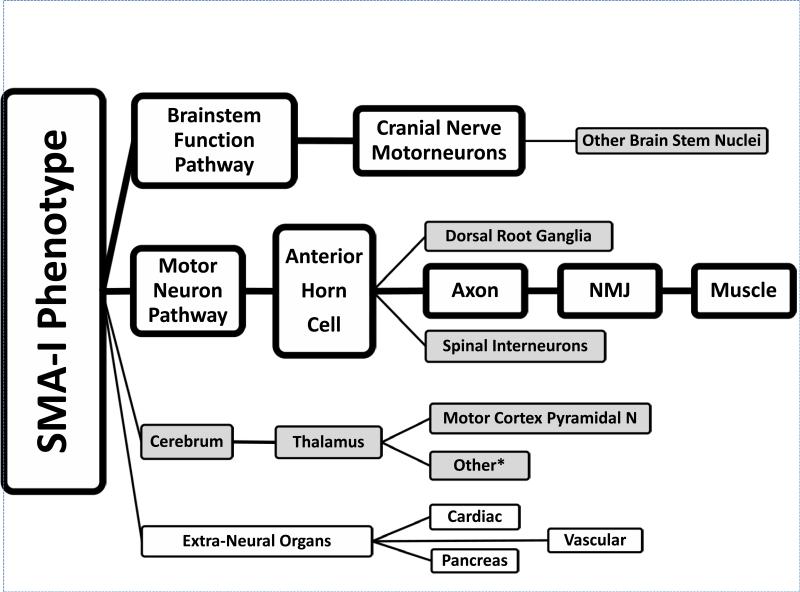Figure 2.
Impaired development of neuromuscular junctions (NMJs) in severe (type 1) spinal muscular atrophy (SMA). (A) Immunohistochemistry of NMJs in the diaphragm muscle from controls (A17, 5 months old; A18, 4 years old) and an SMA patient (case 5, 10 years old) depicting relatively small, non-perforated, acetylcholine receptor (AChR)-expressing endplates in the affected individual. While A17 continues to express the γ-AchR isoform, the endplates from this individual and A18 are relatively elaborately structured (perforated). (B) Quantification of endplate area in the 3 human samples. Cm (D) The complexity of the NMJs was assessed by quantifying the number of perforations (C) and the proportion of endplates expressing the γ-AchR isoform (D). Scale bar, 35 μm.

